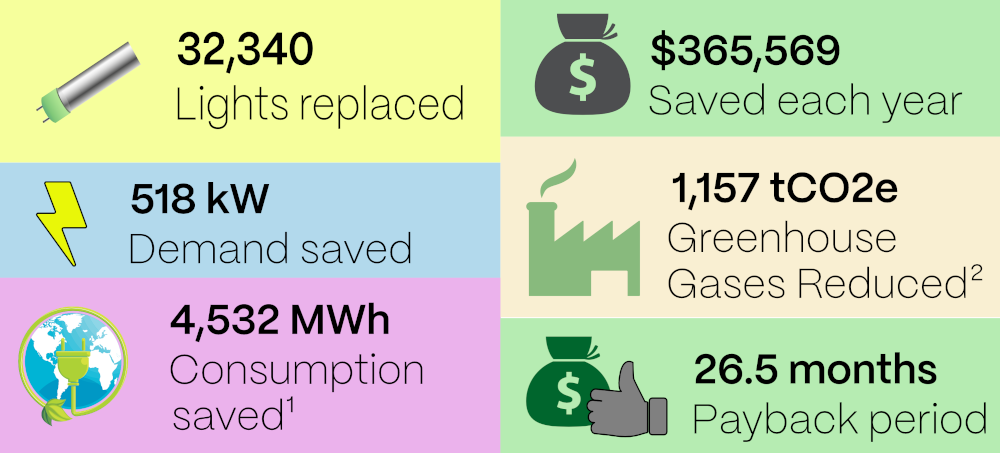
Published: 2023-07-17 Author: Shoeb Anwar
Energy-efficient LED lighting technology has come a long way from the old incandescent and mercury-based fluorescent lights. They now seamlessly integrate with existing systems and offer an eco-friendly solution that lasts longer and consumes less energy.
In 2022, LHSC embarked on a mission to replace 32,000+ fluorescent tube (T8) lights at Victoria Hospital (VH) and University Hospital (UH), targeting round-the-clock areas like bustling corridors and waiting rooms to maximize the benefits of the switch.
We used Type A LED light replacements, compatible with our existing ballasts (another component in the light fixtures), allowing for an efficient installation. Thanks to this innovative plug-and-play technology, there was no need to fiddle with ballasts or rewire fixtures, making the whole process a breeze in terms of time and cost.
But here's the real kicker. While a traditional fluorescent T8 light burns out after about 15,000 hours, LED T8 lights keep shining for an astonishing 70,000 to 100,000 hours! That means the old-school fluorescents would need to be replaced over four times as often, leading to more maintenance, waste, and costs. LED lights are the clear winner in the race for efficiency.
LHSC also took advantage of the province's IESO Retrofit Program, which helps businesses reach their reduction targets by incentivizing a portion of the capital cost. This program helped cover $3 per light installed.
Interestingly, despite replacing a similar number of lights, VH and UH saw different results in annual cost savings and greenhouse gas reductions after the switch. This is because VH has an on-site Power Plant with two cogeneration gas-fired turbines that generate most of the electricity needed for the site.

You can see in the image here how replacing around 32,000 T8 fluorescents with LEDs significantly reduced our electricity demand, consumption, utility costs, and greenhouse gases, all for a reasonable payback time of around 2 years.
While these turbines produce power at a lower cost, they emit higher greenhouse gas emissions per kWh than the Ontario electricity grid, where UH gets all its electricity. As a result, VH experienced a more significant reduction in greenhouse gas emissions costs but decreased cost savings.
Ultimately, the move to LED lighting has been a game-changer for LHSC. Hospitals have become more energy-efficient and cost-effective and have taken a significant step towards a greener and more sustainable future.
¹ Equal to the electricity consumption of 475 Ontario homes in one year.
² Equal to taking 354 passenger vehicles off the road for one year, or 492,638 litres of gasoline consumption.


